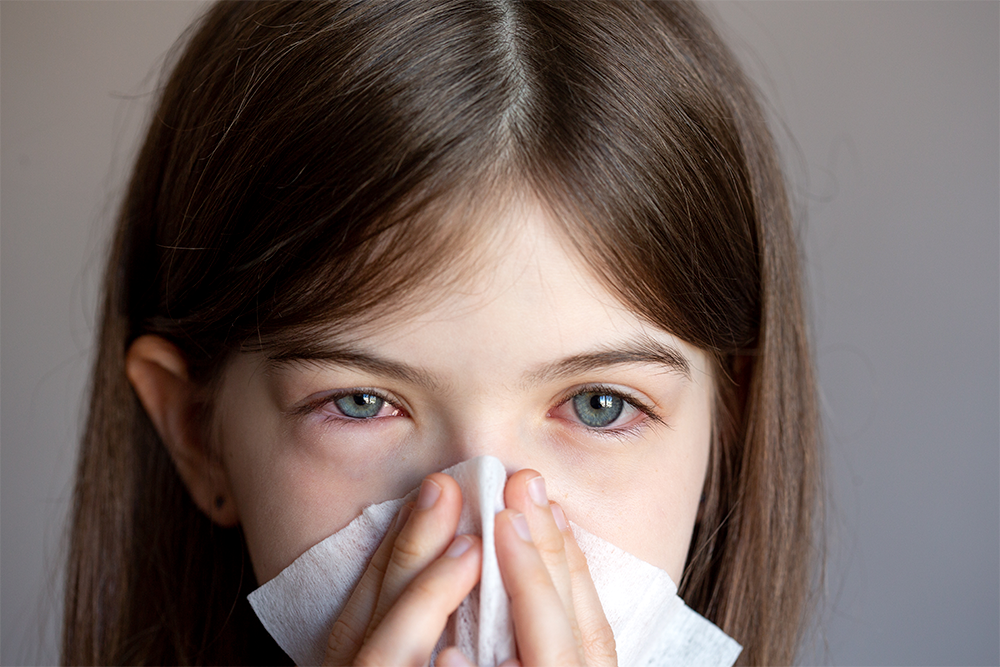UNDERSTANDING EYE COLDS: ARE THEY “PINK EYE” OR SOMETHING ELSE?
Are eye colds the same as pink eye?
Not always.
Many people refer to “pink eye” as a blanket term for all types of conjunctivitis, an inflammation or infection of the conjunctiva — the thin, clear membrane that covers the white part of your eye and lines the inside of your eyelid.
Eye colds, however, are a specific type of viral conjunctivitis that commonly occurs in individuals with a cold or flu. While all eye colds are a form of pink eye, not all pink eye can be classified as an eye cold. Other causes of conjunctivitis include bacterial infections and allergic reactions, which are distinct from viral conjunctivitis.
This means eye colds are pink eye, but not all pink eye is caused by the same underlying factors.
Recognizing the Symptoms of Eye Colds
Since eye colds are a subset of viral conjunctivitis, they share many symptoms with general cases of pink eye. The most common signs include:
• Pink or red discoloration of the whites of your eyes.
• Burning, stinging, or itching sensations.
• Swollen eyelids.
• Teary or watery eyes.
• Whitish eye discharge (less sticky compared to bacterial conjunctivitis).
If these symptoms appear alongside cold or flu symptoms, it’s likely you’re experiencing an eye cold. However, it’s essential to note that similar symptoms could signal more severe eye infections. Consult an eye doctor if your symptoms are intense or last more than one to two weeks.
Viral vs. Bacterial Conjunctivitis
Viral conjunctivitis, including eye colds, is often caused by adenoviruses — the same viruses responsible for many cold and flu symptoms. These infections are typically mild and resolve on their own.
Bacterial conjunctivitis, by contrast, tends to be more severe, with thicker, stickier discharge (often yellow or green in color). This type of conjunctivitis may require antibiotic treatments.
Is There an “Eye Cold Season”?
Yes, eye colds are more common during cold and flu season, typically late fall through early spring. Since viral conjunctivitis spreads similarly to colds and flu — through sneezing, coughing, and contaminated surfaces — cases tend to increase during these months.
However, you can catch or spread an eye cold at any time of year. Proper hygiene, including regular handwashing and avoiding touching your face, can reduce your risk.
Preventing and Treating Eye Colds
Preventing eye colds involves many of the same strategies as preventing colds and the flu:
• Wash your hands frequently.
• Use hand sanitizer when soap isn’t available.
• Avoid touching your eyes, especially in public spaces.
Since eye colds are viral, they cannot be treated with antibiotics. Instead, treatment focuses on symptom relief through:
• Over-the-counter eye drops.
• Warm compresses to soothe irritation.
• Avoiding contact lenses until symptoms resolve.
Most eye colds will clear up within a week or two, but always consult your eye doctor if symptoms persist, worsen, or cause significant discomfort.
Take Control of Your Eye Health
Eye colds may not always be preventable, but understanding the symptoms and seeking timely care can make a big difference. If you’re experiencing symptoms of conjunctivitis, schedule an appointment with Eye Health Consultants today. Our experienced team is here to help you protect your vision and maintain healthy eyes year-round.

It is with great pleasure that we welcome you to our specialty eye care home. Eye Health Consultants provides patients with premium eye care and management of eye conditions such as Glaucoma, Anterior Segment Eye Disease, Pink Eye Treatment, Dry Eye Syndrome, Macular Degeneration, and Non-Surgical Vision Correction.









